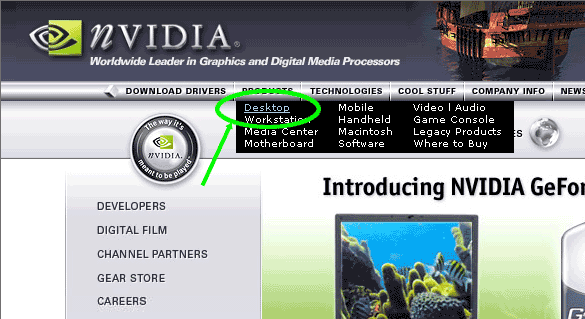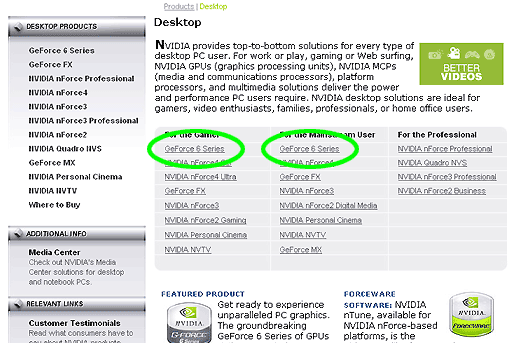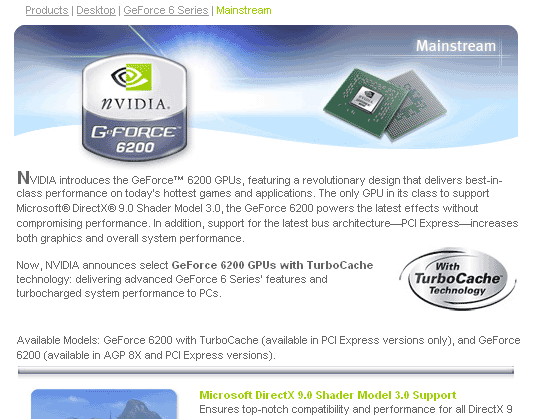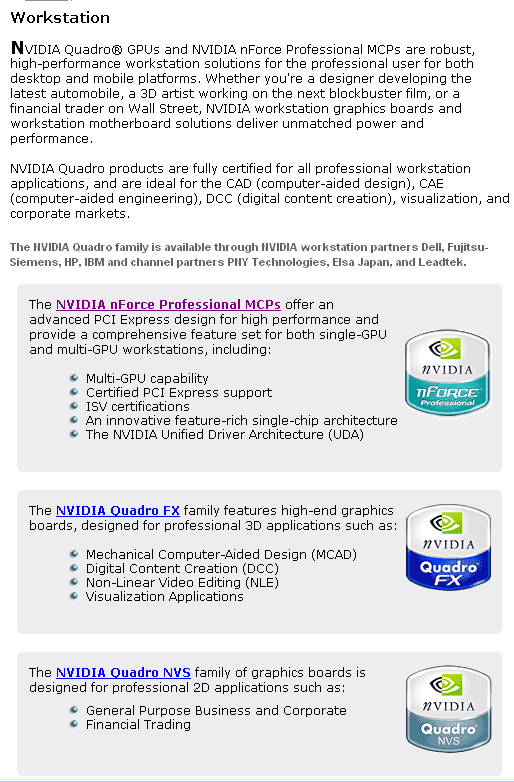How much Graphics Power Does a PC Really Need?
NVIDIA's Website
After some time visiting the NVIDIA website, our user will realize that the products he is looking for can be found under the desktop category. Since he isn't a gamer, he is left with the choice of defining himself as either a professional - which sounds plausible enough given he intends to use the card in a professional working environment - or a mainstream user. The product types aren't segregated; apparently, NVIDIA expects its customers to know in advance whether a product name designates a graphics card or a motherboard.
The user will only find out if the names Quadro, GeForce 6, GeForce FX, and nForce designate graphics cards or other products by clicking on the links, which is a very time-consuming approach.
NVIDIA doesn't differentiate by target audience but by area of use.
What's what? Here, it's unclear which designations denote a graphics card, a motherboard or something else. NVIDIA expects its customers to know that GeForce und Quadro stand for graphics cards while nForce is the name of a line of motherboard chipsets, even though motherboards actually have their own product page (see first screenshot). The office user doesn't fit into any of the provided categories, which are Gamer, Mainstream and Professional.
After clicking on the link for the GeForce 6 series, both the self-declared gamer and the mainstream user are forwarded to the same page. Again, our hypothetical buyer would have to classify himself as a mainstream user to find the appropriate product.
Mission accomplished? GeForce 6200 and GeForce 6200 TurboCache. However, the descriptions don't mention anything about particular suitability for office work.
Once our buyer has found out that the GeForce 6 series is the current line of graphics cards, clicking on the link will bring him to the GeForce 6 product page. Interestingly, both the mainstream user and the gamer are sent to the same page. There, a further distinction is made between mainstream, performance and enthusiast users. After choosing the mainstream user category (which is arguable), he will find the GeForce 6200 line of cards, which consists of the GeForce 6200 and the 6200 TurboCache.
Get Tom's Hardware's best news and in-depth reviews, straight to your inbox.
Unfortunately, he hits a dead end here, as there is no further information on which card is best suited to his needs. The only information he finds is that the GeForce 6200 is a "revolutionary design that delivers best-in-class performance on today's hottest games and applications," and that the GeForce 6200 TurboCache designates a card "delivering advanced GeForce 6 Series' features and turbocharged system performance to PCs."
The NVIDIA workstation product page with solutions for professional applications like CAD, raytracing and so forth is structured much better and explains the application range of the products.
Current page: NVIDIA's Website
Prev Page Graphics Solutions For Home And Office Use From ATI And NVIDIA Next Page Summary: Websites



